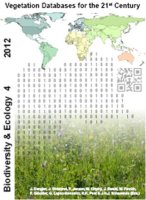Biodiversity & Ecology
Short Database Report Open Access
Vegetation Database of the Cilento National Park
Keywords: nature conservation; phytosociology; vegetation classification.
 English
English
Abstract: A TURBOVEG database, including both original and published phytosociological relevès from the Cilento and Vallo di Diano National Park (Southern Italy), was compiled to support environmental monitoring, landscape planning and vegetation classification. Approximately 2,300 relevès were stored in the database including all the natural and semi-natural vegetation types, ranging from sand dunes (Cakiletea maritimae) to dwarf shrub subalpine vegetation (Pino-Juniperetea). Data span from 1970 to nowadays, updated with the most recent research project. We considered for inclusion in the database phytosociological relevés or any other vegetation plots containing records of species composition (of at least vascular plants) and an estimate of species cover. We extended the standard structure of the database by adding extra fields to fit particular needs, such as including the accuracy of the data location (i.e. a crucial issue for environmental monitoring). A reference check-list of the taxa was set up mostly following Conti et al. (2005) including several largely adopted synonymous to facilitate the correct input of relevé data. Ecological databases are linked to the vascular species using Ellenberg indicator values and including life forms or chorotypes. The database contains useful information to test several ecological hypotheses and to perform wide-scale vegetation classifications. Furthermore it facilitates the use of vegetation-plot data for biodiversity and habitat monitoring and also for land use/cover changes evaluation. This report describes the available content in the Vegetation Database of the Cilento National Park (GIVD ID EU-IT-002).
Suggested citation:
Rosati, L., Del Vico, E., Facioni, L., Azzella, M.M. (2012): Vegetation Database of the Cilento National Park. – In: Dengler, J., Oldeland, J., Jansen, F., Chytrý, M., Ewald, J., Finckh, M., Glöckler, F., Lopez-Gonzalez, G., Peet, R.K., Schaminée, J.H.J. [Eds.]: Vegetation databases for the 21st century. – Biodiversity & Ecology 4: 396–396. DOI: 10.7809/b-e.00185.


